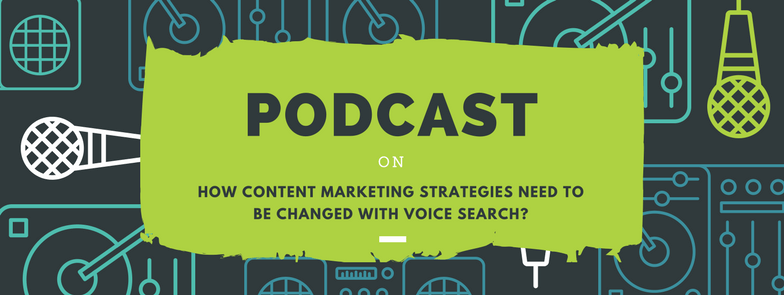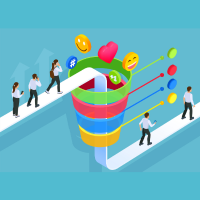.png)
The global digital advertising and marketing business is expected to reach $786.2 billion by 2026, up from $350 billion in 2020. Moreover, Pay-Per-Click (PPC) returns $2 for every $1 invested, for a 200% ROI. Sometimes, when people and businesses are really excited to do well, they accidentally make some common mistakes that can hold back their online brand. In this blog post, we'll talk about what you should avoid doing when building your brand online.
We'll give you helpful advice to stay away from these slip-ups through the process of digital branding for online marketing. It doesn't matter if you're new to this or have some experience, knowing these tips can really help your brand shine online. So, let's start learning the right way to do digital branding for online marketing!
Ignoring Localized Content
Definition
Localized content means creating information and messages that are specially designed for specific regions or languages.
Statistics
Customers can be lost due to a lack of content localisation. An app that fails to localise may lose up to 13% of its customers.
Problem
When businesses ignore localized content, they face problems connecting with diverse audiences. Their messages might not resonate with people in different places or speaking different languages. This can lead to misunderstandings or even alienate potential customers.
Additionally, without localized content, businesses might miss out on valuable opportunities to expand their reach globally. It's like trying to talk to someone who speaks a different language without using any words they understand. So, paying attention to localized content is really important for making sure your message gets across to everyone you want to reach.
Not Paying Attention to Analytics and Data
1. Analytics and Data means using information and numbers to understand how well something is working.
2. Data and analytics are crucial to their organization's digital transformation programmes, according to 94% of business and enterprise analytics specialists.
3. When businesses ignore Analytics and Data, they're like driving a car blindfolded. They don't know if they're going the right way or if they're about to hit a bump. Without looking at the numbers, they can't see what's working and what needs improvement. This means they might waste time and money on strategies that don't actually help their business grow. It's like cooking without tasting the food – you won't know if it needs more salt or if it's already perfect. So, paying attention to Analytics and Data is like having a map that guides you to success.
Forgetting Mobile Optimization
Definition
Mobile Optimization means making sure that websites and content work well on phones and tablets
Statistics
Because they do not want to download a mobile app, 50% of smartphone users prefer to browse or shop on a mobile sit
Problem
When businesses don't do Mobile Optimization, they're missing out on a huge group of people. Many folks use their phones to browse the internet, and if a website doesn't work properly on their device, they'll leave. This means businesses lose potential customers and sales.
It's like having a store with a broken door – people can't get in, so they'll go somewhere else. Plus, search engines like Google favour mobile-friendly sites, so not optimizing can hurt a business's visibility online. In short, Mobile Optimization ensures everyone can access and enjoy your website, leading to better results for your business.
Overlooking for SEO for Images and Videos
SEO for Images and Videos means making sure that pictures and videos are easy for search engines to understand and show in search results.
Google Search, Google Images, and Google Maps account for 92.96% of global traffic.
When businesses don't do SEO for Images and Videos, they miss out on a chance for more people to find them online. Search engines can't "see" images and videos like humans can, so they rely on text descriptions. Without proper optimization, search engines might not know what the image or video is about, making it harder for potential customers to discover the content.
This means businesses lose out on potential traffic and customers who might have been interested in their products or services. So, doing SEO for Images and Videos helps businesses reach a wider audience and improve their online visibility.
Underestimating the Power of User-Generated Content
User-generated content refers to content, like reviews or posts, created by customers or users of a product or service. User-generated content is 35% more memorable than professional marketers' content. When businesses don't encourage User-Generated Content, they miss out on a powerful way to build trust. People often trust recommendations from other customers more than company advertisements.
Without this authentic feedback, potential customers might hesitate or doubt the quality of a product or service. Additionally, not showcasing positive user experiences can make a business seem less credible. It's like having a friend vouch for a restaurant – it's more convincing than just seeing an ad. Embracing User-Generated Content helps businesses build a loyal community and gain credibility in the eyes of potential customers.
Key Takeaway
In the world of digital branding for online marketing, steering clear of common slip-ups is crucial for success. Remember, the process of digital branding for online marketing is more than just putting your name out there. It's about consistency, understanding your audience, and adapting to different platforms.
According to Accenture, global income from offline commerce channels would decline by 20% by 2021, while the B2B Commerce industry in the United States alone will reach $1.2 trillion over that time period. By heeding the guidance for the digital branding for online marketing, you avoid pitfalls like neglecting accessibility, ignoring local perspectives, and underestimating mobile users.
Don't forget to analyze your data, and let user feedback shine. These steps, though simple, can make all the difference. So, as you embark on your digital branding journey, keep these lessons close – they'll be your trusted companions in building a strong, impactful online presence. And if you want expert help regarding this, don’t forget to check out Emarketz.
Emarketz is a digital marketing agency that offers a range of services to help businesses establish their Digital branding for online marketing. Their digital branding service is designed to help companies create a strong brand identity that resonates with their target audience.
Their process of digital branding for online marketing including logo design, brand messaging, website design, social media marketing, and more. By leveraging the latest digital marketing strategies and technologies, Emarketz helps businesses build a strong online presence and reach their target audience more effectively.
FAQ'S:
1. what is Digital branding for online marketing?
Digital branding for online marketing involves creating a unique and recognizable online identity for a business to promote its products or services.
2. How digital branding helps my business to grow online?
Digital branding helps my business grow online by establishing a strong online presence, building trust with customers, and differentiating my brand from competitors.
3. What are the strategies that can be implemented in digital branding to grow in online marketing?
Strategies for digital branding in online marketing include consistent brand messaging, engaging content creation, utilizing social media platforms effectively, optimizing for search engines, and leveraging influencer collaborations.
4. What are the tools used for digital branding to grow in online marketing?
Tools for digital branding in online marketing encompass social media management platforms like Hootsuite, design tools like Canva, analytics tools such as Google Analytics, email marketing platforms like MailChimp, and customer relationship management systems like HubSpot.




